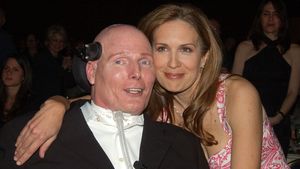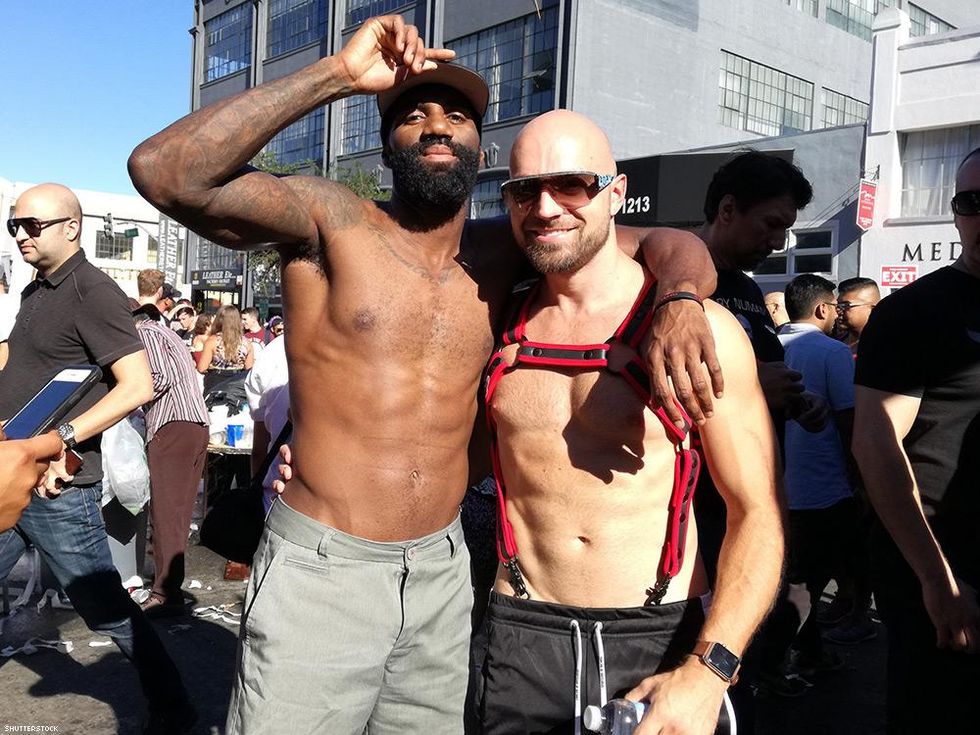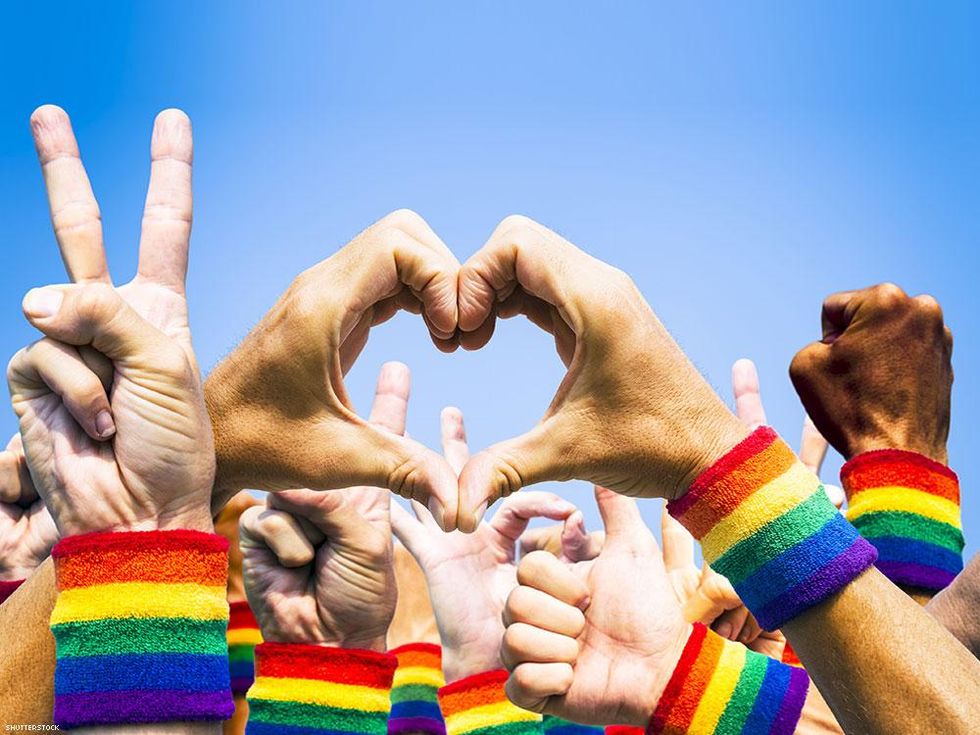Let's deconstruct the societal concept of gender, shall we?

Shutterstock
Gender is a societal concept in which the binary system consists of either a male or female. These defined gender roles make up our societal expectations, but these constructed differences are starting to include a broader spectrum that can be hard to keep up with.
These days, there are a growing number of people who identify as nonbinary, meaning they don't subscribe to either gender. Here are 10 things you should know about what it means to be a nonbinary person.
1. What does it mean to be nonbinary?

Shutterstock
Since nonbinary people don't subscribe to being either "male" or "female," they're more likely to subscribe to either a mix of genders or perhaps even no gender at all. This realm also contains people who are genderfluid, which means their genders change over time. Others may be partial to one particular gender over the other. Other terms can include genderqueer or agender, and although they don't all mean exactly the same thing, they all speak to the experience that the idea of gender is not simply male and female.
2. Are nonbinary and transgender the same thing?

Shutterstock
Being transgender and being nonbinary are not mutually exclusive. Transgender means you feel like your gender identity is not the same as the physical body you were born with. Often, this includes a physical transition to feel more aligned with the gender you feel you are. While transgender people can be nonbinary and vice versa, they are not one and the same.
3. Being nonbinary is actually nothing new

Shutterstock
Nonbinary identities actually date back as far as 2000-1800 BCE, when ancient Egyptian hieroglyphs recorded three different genders. The common belief was the third gender category, called "Sekhet," were eunuchs, but modern scholars now realize this could have been a biased interpretation of the binary, as little evidence of any castration has been found.
4. Let's talk about the pronouns

Shutterstock
These days, you may see a lot of "he/him" "she/they" "they/them" type parenthesis after people's names, and all of those consist of their pronouns. Pronouns don't have a gender and take place of a person's name. "They/them" pronouns may feel like you're speaking to or about multiple people, but they can encompass a single person, as well. Think about if you're talking about someone you haven't met that you're friend is introducing you to and you have zero idea about them. You would naturally say something like, "Do I need to know anything about them?" if you didn't know their gender, so it's really the same thing.
5. Gendered language in general is also on the out

Shutterstock
To help avoid confusion, a lot of gendered language is also starting to be replaced with more inclusive phrases. For example, instead of things like "boyfriend" or "actor" we might shift to "companion" or "celebrity," especially if we're not sure what gender they identify with. Phrases like "ladies and gentlemen" are also shifting toward things like "everyone" or "distinguished guests" for the same reason.
6. Sex and gender are not the same thing

Shutterstock
We're all taught that sex and gender are binary, or that chromosomes are the objective decider of someone's biological sex. While "sex" refers to the physical genitalia on your body, "gender," as mentioned above, is both created and reinforced by societies, and it often changes and shifts throughout time. In modern times, society is simply moving toward a more diverse recognition of all of these different gender identities and expressions... for the most part, anyway.
7. What's the difference between "nonbinary" and "intersex"?

Shutterstock
Being nonbinary and being intersex are not the same thing, but they are often confused. Intersex is more of an umbrella term for individuals whose physical bodies don't follow the binary male or female categories. This could be someone whose external genitals either appear female or didn't finish forming, can have both testicular and ovarian tissue, or external female genitals that may appear male. Nonbinary, on the other hand, is more of an internal experience.
8. Gender expression and gender identity are also not the same thing

Shutterstock
It can also be easy to confused the ideas of gender expression and gender identity, but they are also not one and the same. Your gender identity is the gender you feel you are, whereas your gender expression covers how you behave, act, dress, or even speak about your gender. A common assumption is all nonbinary people dress or behave in an androgynous style, but since gender identity and gender expression are completely personal, this isn't true.
9. Gender identity does not determine sexual orientation

Shutterstock
People think sexual orientation and gender identity are also related, but they, too, are distinct from each other. While your gender identity covers how you feel or express your gender, your sexual orientation refers to your emotional and physical attraction to others. Thus, a male-bodied person who identifies more female can still be attracted to and date women, and vise versa.
10. Nonbinary people don't automatically have gender dysphoria

Shutterstock
"Gender dysphoria" refers to people who feel discomfort or distress with their gender identity not aligning with their assigned gender at birth. This clinically significant distress may include the desire to transition, but that does not mean all nonbinary individuals feel that way. Plus, the term itself suggests that gender identity is a mental illness as it is, which is a harmful concept that nonbinary people have to face. And just in case it needs to be said, it is not, in fact, a mental illness.
BONUS:You don't have to understand it to be supportive

Shutterstock
It should go without saying or it could come as a shock, but you don't actually have to understand what it means to be nonbinary just to support someone who is. A lot of people haven't heard about nonbinary genders and they have trouble understanding it once they do, but that doesn't mean you can't respect them, starting at least with the use of their pronouns or chosen name. Outside of that, do your best not to make any assumptions until you're outright told how someone identifies.


























































 A couple kisses in the middle of the street during the Christopher Street Day ; Men seen kissing during the 2023 Pride Barcelona Parade.Yerchak Yauhen/SOPA Images/LightRocket via Getty Images; imone Boccaccio/SOPA Images/LightRocket via Getty Images
A couple kisses in the middle of the street during the Christopher Street Day ; Men seen kissing during the 2023 Pride Barcelona Parade.Yerchak Yauhen/SOPA Images/LightRocket via Getty Images; imone Boccaccio/SOPA Images/LightRocket via Getty Images





























